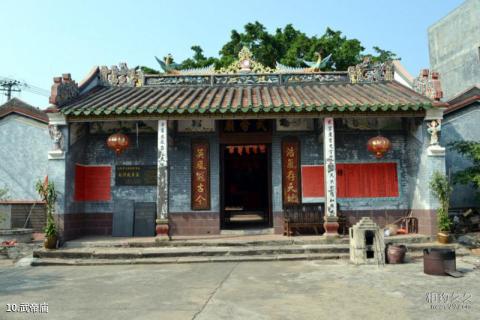
Introduction to Wu Emperor Temple: Nanwan Wu Emperor Temple, also known as Guandi Temple, was first built during the Kangxi period of the Qing Dynasty and has been renovated many times. In the eighth year of Tongzhi (1870), it was moved to the current site and rebuilt. It is a courtyard-style religious building and is the largest temple building in Nanwan. It is a temple with a history of more than 300 years. It is an ancient temple with a long history and relatively well-preserved existing in Beihai City. There is a saying among the people that "first there was Nanjing, then there was Beihai". This temple is a window to understand the folk culture of Beihai and the historical development of Beihai. There is a couplet on the temple gate: "The majesty exists in the heaven and the earth, and the heroic spirit prevails in ancient and modern times." On the roof of the temple, there are relief sculptures of double phoenixes facing the sun, flowers and plants. There are murals on the walls of the temple porch such as "Fairy Scattering Flowers", "Sworship in the Taoyuan", "Seeking Virtues on the Weishui River", "Zhao Zilong's Single-gun Savior", and "Three Heroes Fighting Lu Bu".
